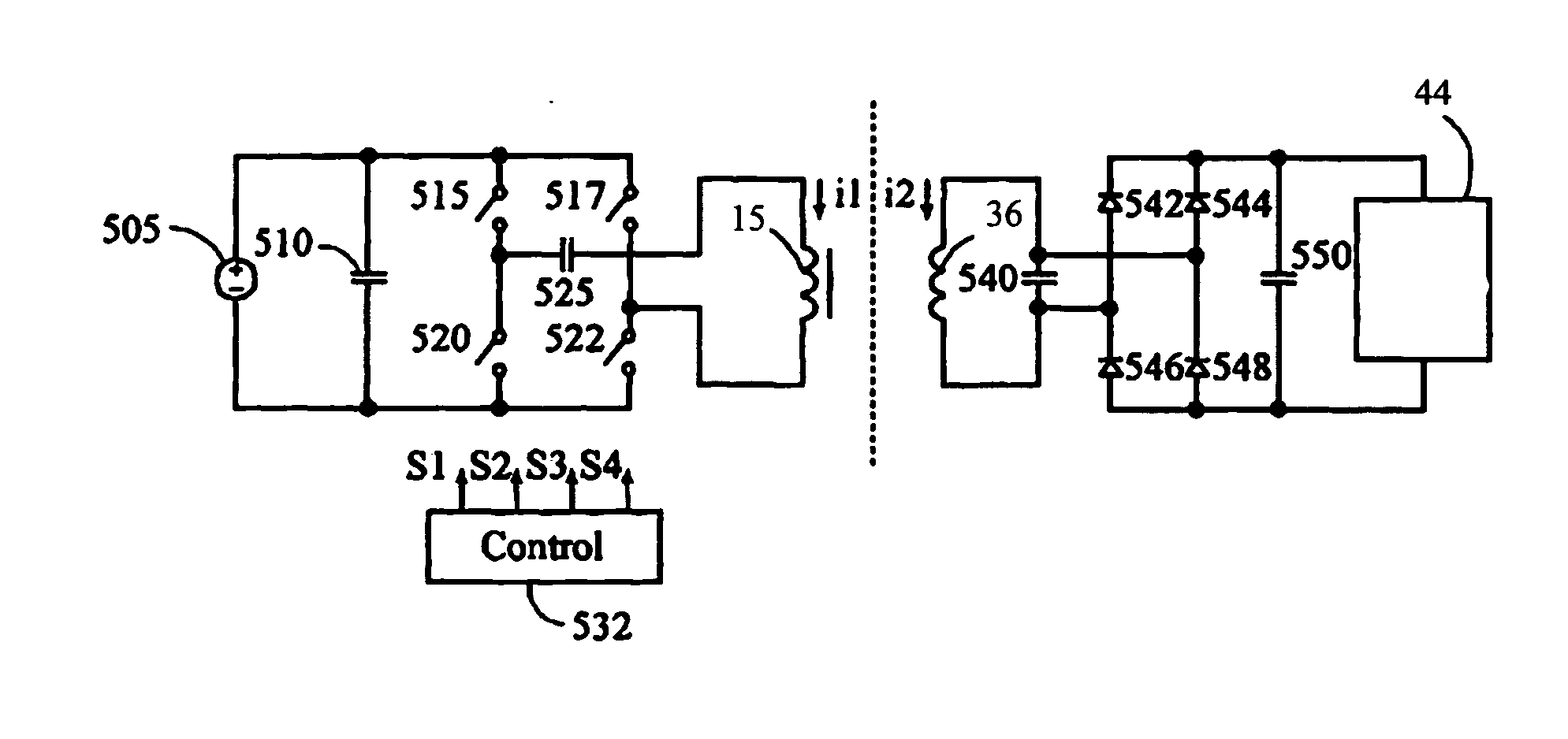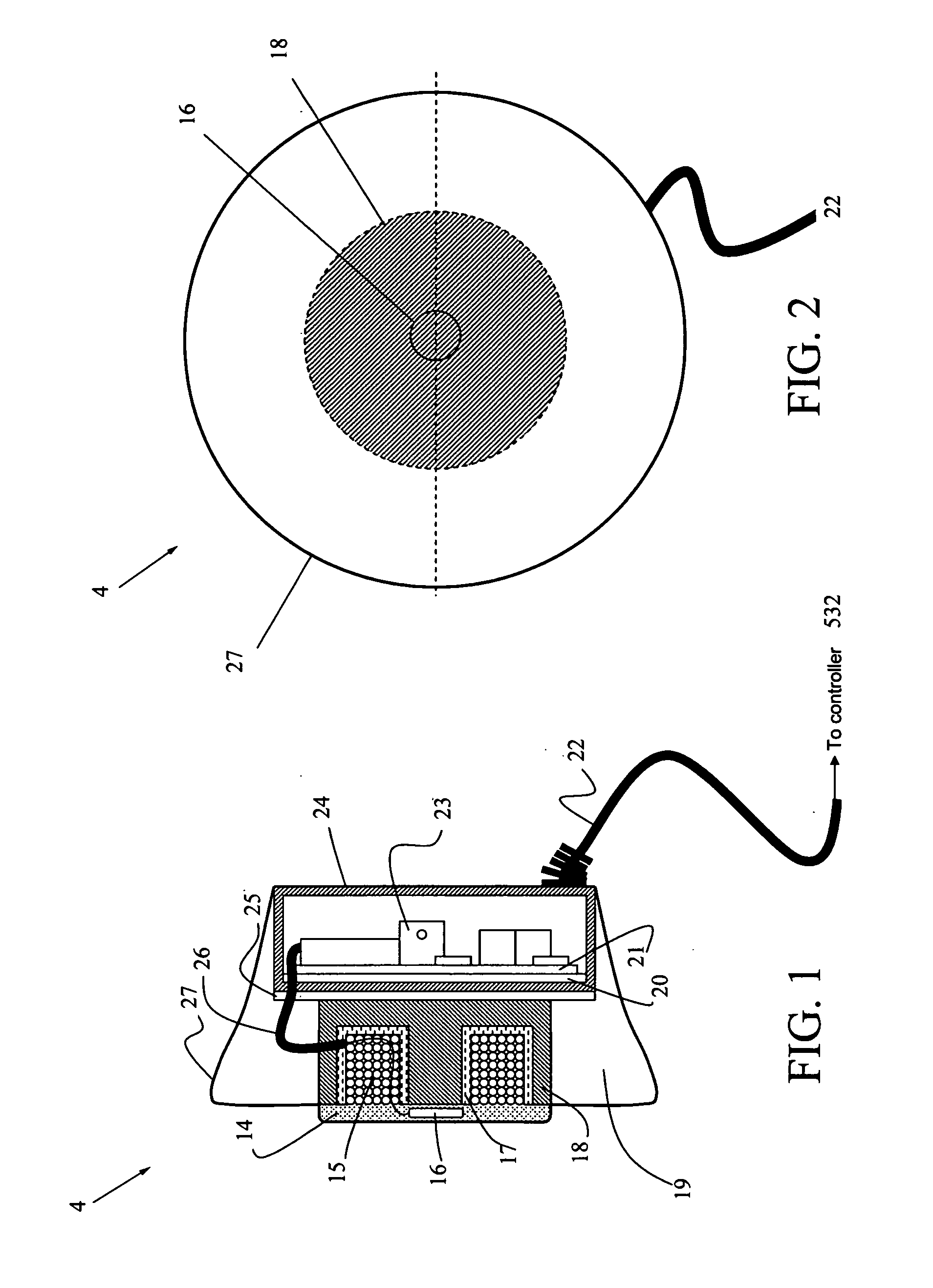Implantable medical device with contactless power transfer housing
a medical device and power transfer technology, applied in the field of implantable medical devices, can solve the problems of large challenge for many researchers, the size of an implanted device directly affecting the comfort of patients, so as to minimize surgery and subsequent treatments, optimize the transcutaneous magnetic coupling, and minimize charging time
- Summary
- Abstract
- Description
- Claims
- Application Information
AI Technical Summary
Benefits of technology
Problems solved by technology
Method used
Image
Examples
Embodiment Construction
[0029] The present invention is a contactless power transfer system for an implantable medical device, which includes a primary recharging unit located outside the human body and a contactless power transfer housing forming a portion of the implantable medical device that is implanted inside the human body. A number of embodiments of the present invention will now be described in details with reference to the accompanying drawings.
[0030]FIG. 1 is a side cut-away view, and FIG. 2 is a front view of the primary recharging unit 4, which generally comprises a toroid-shaped housing 27 with charging coils 15 on one side, and circuit components 23 on the other side that are connectable by power cable 22 to a controller (not shown) for controlled application of recharging power. The controller can be located either inside or outside of the primary recharging unit. The advantage of including the controller inside is minimizing the unit. Furthermore, the primary recharging unit can include s...
PUM
| Property | Measurement | Unit |
|---|---|---|
| frequency | aaaaa | aaaaa |
| magnetic flux | aaaaa | aaaaa |
| ferromagnetic | aaaaa | aaaaa |
Abstract
Description
Claims
Application Information
 Login to View More
Login to View More - R&D
- Intellectual Property
- Life Sciences
- Materials
- Tech Scout
- Unparalleled Data Quality
- Higher Quality Content
- 60% Fewer Hallucinations
Browse by: Latest US Patents, China's latest patents, Technical Efficacy Thesaurus, Application Domain, Technology Topic, Popular Technical Reports.
© 2025 PatSnap. All rights reserved.Legal|Privacy policy|Modern Slavery Act Transparency Statement|Sitemap|About US| Contact US: help@patsnap.com



